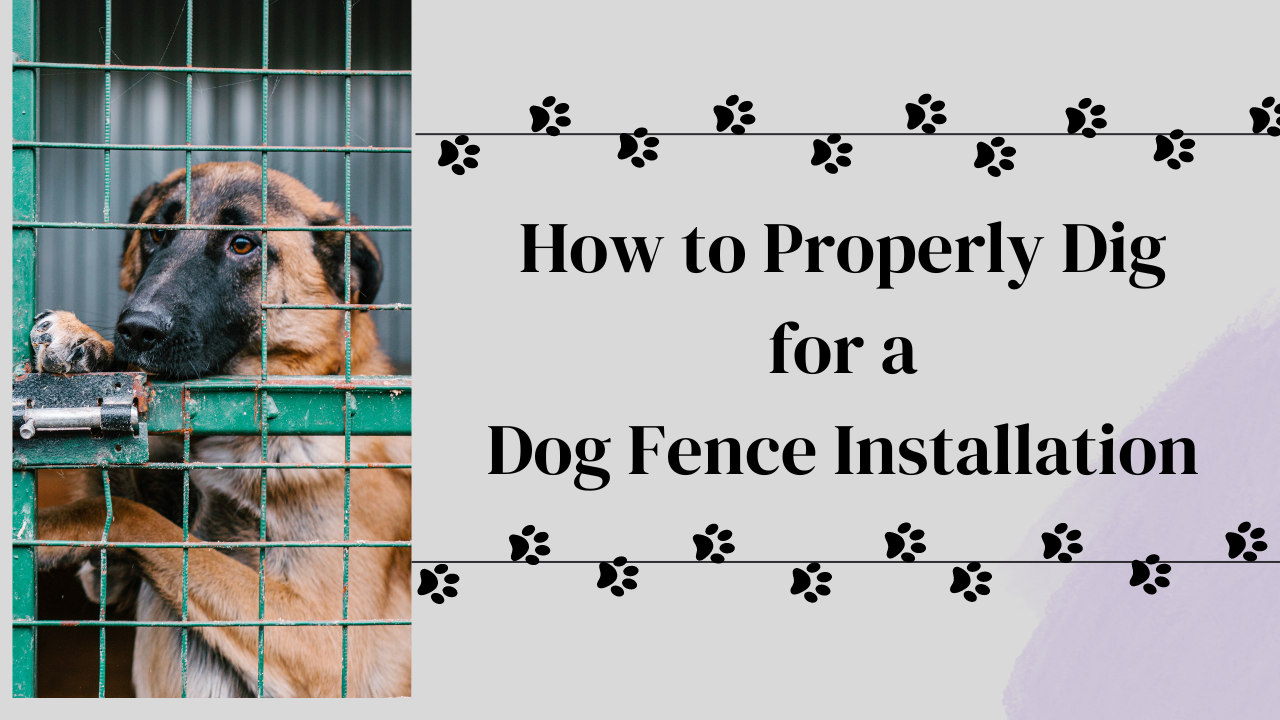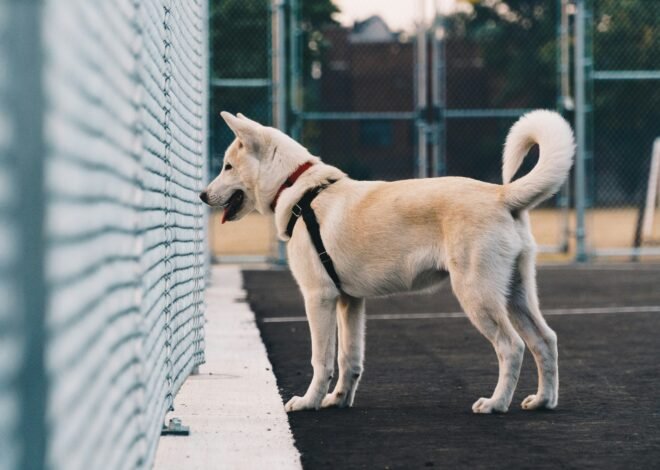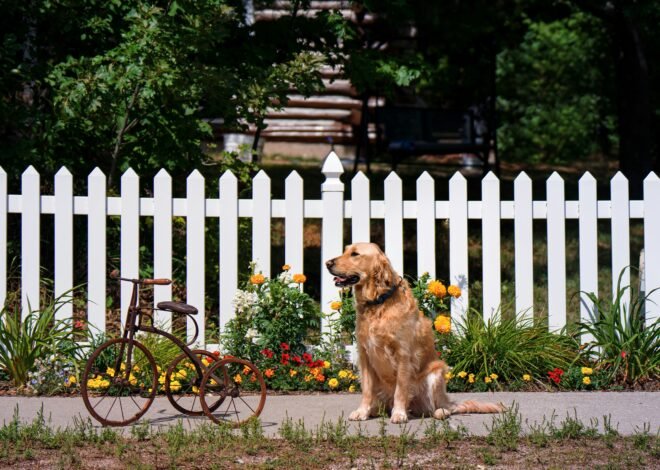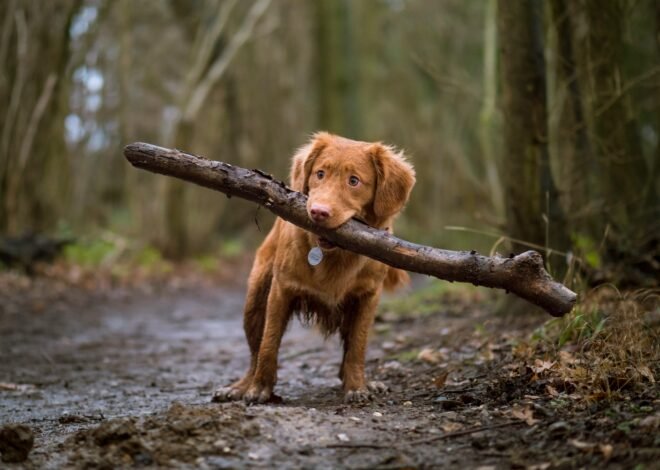
How to Properly Dig for a Dog Fence Installation
Installing a dog fence is an excellent way to ensure your pet’s safety while giving them the freedom to roam your yard. Whether you’re installing a traditional physical fence or an inground invisible fence, proper digging is crucial to the installation process. This guide will walk you through the steps to properly dig for a dog fence installation, ensuring the process is smooth and effective.
Planning and Preparation
Before you start digging, it’s important to plan and prepare. Proper planning will save you time and effort, ensuring your fence is both effective and durable.
- Determine Your Fence Type
There are two main types of dog fences that require digging:
- Physical Fences: These include wood, vinyl, chain link, and metal fences. (key product)
- In Ground Invisible Fences: These use a buried wire to create an invisible boundary, which works with a receiver collar worn by your dog.(high demand product)
- Measure and Mark the Area
Measure the perimeter of the area where you plan to install the fence. Use stakes and string to outline the path of the fence. This will give you a clear visual of where to dig.
- Check for Utilities
Before digging, contact your local utility companies to have them mark any underground lines. Digging without this step can be dangerous and may result in service interruptions or legal issues. For more information on checking for utilities, visit [Call 811](https://call811.com/).
- Gather Your Tools
Ensure you have all the necessary tools before you start. For a physical fence, you’ll need:
- Shovel or post hole digger
- Tape measure
- Level
- Wheelbarrow
- Concrete mix (for securing posts)
- Protective gear (gloves, safety glasses)
For an inground invisible fence, you’ll need:
- Shovel or trenching tool
- Wire
- Wire flags
- Splice kits (for connecting wires)
- Wire locator (optional, to ensure proper placement)
Digging for a Physical Dog Fence
- Mark Post Locations
Mark the locations for the fence posts. Typically, posts are spaced 6 to 8 feet apart, but this can vary depending on the type of fence and local building codes. Use spray paint or flags to mark the spots.
- Dig Post Holes
Using a post hole digger or shovel, dig holes for the fence posts. The depth of the holes should be at least onethird the height of the fence for stability. For example, if you’re installing a 6foot fence, dig holes at least 2 feet deep. The diameter of the holes should be about three times the width of the posts.
- Set the Posts
Place the posts in the holes and check that they are plumb (vertically level) using a level. Fill the holes with concrete to secure the posts. Allow the concrete to cure according to the manufacturer’s instructions, typically 24 to 48 hours.
- Dig a Trench (Optional)
If you’re installing a fence with a bottom rail or need to bury part of the fence to prevent your dog from digging under, dig a shallow trench along the fence line. This trench should be about 6 inches deep and 6 inches wide.
- Install Fence Panels or Rails
Once the posts are set and the concrete has cured, attach the fence panels or rails. Follow the manufacturer’s instructions for securing the panels or rails to the posts.
Digging for an In Ground Invisible Dog Fence
- Plan the Boundary Path
Determine the path of the boundary wire. The wire must form a continuous loop to work properly. Avoid areas with heavy traffic or potential interference, such as near metal objects or electrical lines.
- Test the System
Before digging, lay the wire on the ground along the planned path and connect it to the transmitter. Test the system with the receiver collar to ensure the signal is working correctly.
- Dig the Trench
Using a shovel or trenching tool, dig a shallow trench about 1 to 3 inches deep along the planned path. The trench should be wide enough to accommodate the wire. If you’re crossing a driveway or walkway, use a circular saw with a masonry blade to create a narrow groove for the wire.
- Lay the Wire
Place the boundary wire in the trench, ensuring it is laid out smoothly without any kinks or twists. Use splice kits to connect any sections of wire, ensuring the connections are waterproof and secure.
- Cover the Wire
Fill the trench with soil, being careful not to damage the wire. Compact the soil to ensure the wire stays in place. Use wire flags to mark the boundary, helping with the initial training process for your dog.
- Connect and Test
Connect the boundary wire to the transmitter and test the system again. Walk the perimeter with the receiver collar to ensure the signal is consistent and the boundaries are correctly marked.
Training Your Dog
Once your fence is installed, it’s essential to train your dog to understand the boundaries. Here are some training tips:
- Introduce the Boundary: Walk your dog on a leash around the boundary, allowing them to hear the warning beep from the receiver collar.
- Use Positive Reinforcement: Reward your dog with treats and praise when they respect the boundary.
- Practice Daily: Conduct short, frequent training sessions to reinforce the boundaries.
- Gradual Off Leash Time: Gradually allow your dog more freedom off leash, closely supervising them to ensure they stay within the boundaries.
Maintenance Tips
To ensure the longevity and effectiveness of your dog fence, regular maintenance is essential:
- Inspect the Fence: Regularly check the physical fence for damage or weak spots. For invisible fences, inspect the boundary wire for breaks or wear.
- Test the System: Periodically test the invisible fence system with the receiver collar to ensure it is functioning correctly.
- Maintain the Landscape: Keep the area around the fence clear of debris and overgrowth that could interfere with the system or damage the fence.
Conclusion
Properly digging for a dog fence installation is a crucial step in ensuring the safety and security of your pet. Whether you’re installing a physical fence or an inground invisible fence, following these guidelines will help you create a secure boundary for your dog. With careful planning, the right tools, and proper training, your dog can enjoy the freedom of your yard while staying safe and secure.
For more information on installing a dog fence, you can visit Wayfair’s Guide to Installing a Fence and Lowe’s Dog Fence Installation Tips .



2 thoughts on “How to Properly Dig for a Dog Fence Installation”